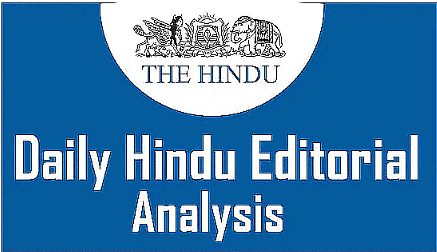UPSC Exam > UPSC Notes > Current Affairs & Hindu Analysis: Daily, Weekly & Monthly > THE HINDU EDITORIAL ANALYSIS- 17TH JANUARY 2023
THE HINDU EDITORIAL ANALYSIS- 17TH JANUARY 2023 | Current Affairs & Hindu Analysis: Daily, Weekly & Monthly - UPSC PDF Download

Time to streamline the Provident Fund pension scheme
Context
For around 70 lakh pensioners, the end to the agonising wait for higher pension under the Employees’ Pension Scheme (EPS), 1995, appears to be no where in sight even though it has been over two months since the Supreme Court of India reiterated, as a matter of principle, its approval of the idea of higher pension. A circular issued in late December by the Employees’ Provident Fund Organisation (EPFO), the administering body for the EPS, has only aggravated the sense of pain pensioners experience. Though considered a sequel to the Court’s verdict where the EPFO was asked to implement the Court’s directions of October 2016 too, the circular covers only a segment of pensioners — that too subject to certain conditions.
What is the Employees' Pension Scheme?- About:
- EPF Pension, which is technically known as Employees’ Pension Scheme (EPS), is a social security scheme provided by the Employees’ Provident Fund Organisation (EPFO).
- The scheme was first launched in 1995.
- The scheme, provided by EPFO, makes provisions for pensions for the employees in the organized sector after the retirement at the age of 58 years.
- Employees who are members of EPF automatically become members of EPS.
- Both employer and employee contribute 12% of employee’s monthly salary (basic wages plus dearness allowance) to the Employees’ Provident Fund (EPF) scheme.
- EPF scheme is mandatory for employees who draw a basic wage of Rs. 15,000 per month.
- Of the employer's share of 12 %, 8.33 % is diverted towards the EPS.
- Central Govt. also contributes 1.16% of employees’ monthly salary.
- EPS (Amendment) Scheme, 2014:
- The EPS amendment of 2014, had raised the pensionable salary cap to Rs 15,000 a month from Rs 6,500 a month, and allowed only existing members (as on September 1, 2014) along with their employers exercise the option to contribute 8.33% on their actual salaries (if it exceeded the cap) towards the pension fund. This was extendable by another six months at the discretion of the Regional Provident Fund Commissioner.
- It, however, excluded new members who earned above 15,000 and joined after September 2014 from the scheme completely.
- The amendment, however, required such members to contribute an additional 1.16% of their salary exceeding ₹ 15,000 a month towards the pension fund.
- Under Article 142, the Supreme Court ruling gives EPFO members, who have availed of the EPS, another opportunity over the next four months to opt and contribute up to 8.33% of their actual salaries as against 8.33% of the pensionable salary capped at Rs 15,000 a month towards pension.
- Under the pre-amendment scheme, the pensionable salary was computed as the average of the salary drawn during the 12 months prior to exit from membership of the Pension Fund. The amendments raised this to an average of 60 months prior to exit from the membership of the Pension Fund.
- The court held the amendment requiring members to contribute an additional 1.16 % of their salary exceeding Rs 15,000 a month as ultra vires the provisions of the Employees’ Provident Funds and Miscellaneous Provisions Act, 1952.
- People who have subscribed to EPF will be able to get pension on their full salary instead of Rs. 15000 cap.
- Employees and Employers, who have contributed to the EPF without any approval from Assistant Provident Commissioner, may not get the benefit of judgment.
- Amendment done in 2014 may remain applicable to the companies which manage their EPF corpus through trusts.
The document THE HINDU EDITORIAL ANALYSIS- 17TH JANUARY 2023 | Current Affairs & Hindu Analysis: Daily, Weekly & Monthly - UPSC is a part of the UPSC Course Current Affairs & Hindu Analysis: Daily, Weekly & Monthly.
All you need of UPSC at this link: UPSC
|
63 videos|5408 docs|1146 tests
|
Related Searches
















